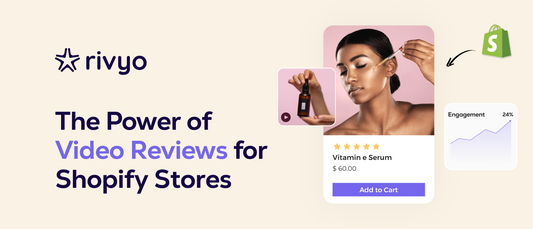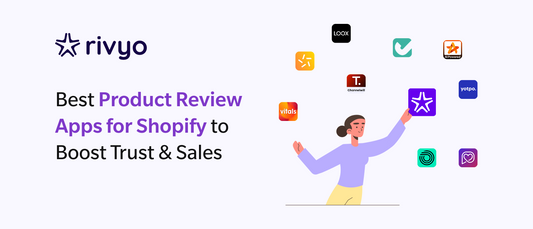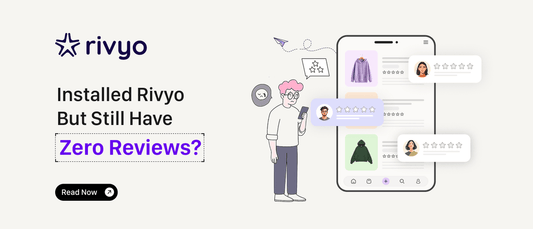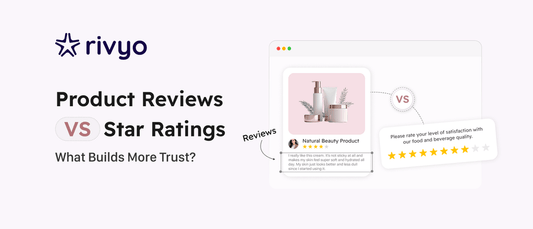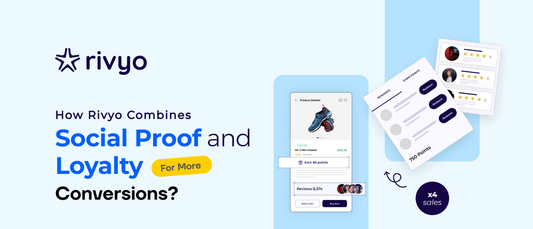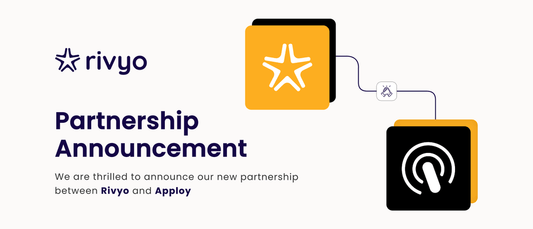How to Encourage Customers to Leave Honest, High-Quality Reviews?

In today's world, online reviews have become the new word-of-mouth. Whether you're running an eCommerce store, a SaaS platform, or a local business, what your customers say about you online directly impacts on your brand reputation, sales, and SEO performance. In fact, a majority of potential buyers read multiple reviews before making a purchase decision and they trust those reviews almost as much as personal recommendations.
However, while many customers are satisfied with their experience, a very small number of customers take the time to submit a review, especially one that is informative and helpful. The remaining customers are unable to share their experiences for various reasons; here is where a talented business owner and marketer are needed who can convince people to share their experience.
In this guide, we’ll walk you through proven strategies to encourage customers to leave honest, high-quality reviews that build trust, attract new customers, and improve your online visibility without sounding pushy or inauthentic.
Why Honest, High-Quality Reviews Matter
In an era where consumers have been overloaded with choices, authentic reviews serve as a trusted guidepost. They don’t just validate a product, they shape the buyer’s journey and directly influence conversion rates.
Here’s why honest, high-quality reviews are important for your business:
1. Builds Trust and Credibility: Genuine reviews reflect real experiences, helping potential customers feel confident in their decision. In fact, 88% of people trust online reviews as much as personal recommendations.
2. Boosts SEO and Online Visibility: Search engines, especially Google, prioritize fresh, user-generated content. High-quality reviews can help your product pages rank higher in search results, increasing organic traffic to your website or store.
3. Influences Purchasing Decisions: Before making a purchase, buyers need confidence. Detailed reviews that highlight benefits, outcomes, or even weaknesses help customers make informed decisions and enhance conversion rates.
4. Provides Valuable Business Insights: Whether positive or negative, honest feedback provides insight into client needs, pain points, and overall satisfaction. These insights are important when it comes to improving your products, services, and support.
5. Strengthens Brand Reputation: A consistent flow of authentic, thoughtful reviews shows that your brand is active, trusted, and transparent. It helps create a public perception of reliability and openness, which is vital for long-term success.
Actionable Strategies to Encourage High-Quality Reviews
1. Ask at the Right Time and in the Right Way
The best time to ask for a review is after a positive interaction or once the customer has had a chance to experience the value of your product or service. Avoid asking immediately after a purchase, especially if it's a service that takes time to realize its benefits. Catch customers when they're most satisfied, such as:
- Immediately after a successful purchase or delivery.
- After positive customer service interactions.
- When they've reordered a product or subscribed again.
To speed up the process, use automated email triggers or post-purchase popups with a friendly review request.
2. Make It Easy to Leave a Review
Don't make customers hunt for where to leave a review. Include direct links to your review profiles (Google My Business, Yelp, industry-specific platforms) in your post-purchase emails, on your website, and even on physical receipts or packaging. Simplify the review process by:
- Sending direct links to your review platform (e.g., Google, Trustpilot, Shopify App Store).
- Embedding a review widget on your website or thank-you page.
- Offering multiple review platform options.
For example, “Loved your purchase? Leave a quick review here, it only takes 30 seconds!”
3. Use Personalized Review Requests
Customers are far more likely to respond to a review request that feels genuine rather than robotic or generic. Personalization creates a sense of connection and makes the customer feel like their opinion truly matters. How to personalize review requests effectively:
- Use their name and purchase details
- Reference the experience, Mention a specific milestone, such as: “Thanks for your second order!”
- Ask a friendly, open-ended question
- Use a consistent tone
Optimized Review Request Email Template:
Subject: Sarah, how’s your experience with Rebolt going?
Hi Sarah,
We hope you're getting the most out of your [Product Name]! Your opinion means the world to us. Would you mind sharing a quick review about your experience so far?
What do you love most about it? What can we improve?
[Leave a Review Button]
Thank you for being part of our journey!
— The Rivyo Team
4. Offer Value (But Avoid Fake Incentives)
It's natural to want to reward customers for their time—but it’s essential to stay compliant with platform policies (like Google, Yelp, or Amazon), which prohibit incentivized or biased reviews. Instead of offering discounts or rewards in exchange for a review, try offering value-added experiences that make customers feel appreciated and involved:
- Giving early access to features for feedback.
- Offering a chance to be featured on your social media.
- Running “review contests” that don’t promise rewards in exchange.
Avoid statements like “Leave a 5-star review and get 10% off”—this can lead to penalties and a loss of trust.
Get More Product Reviews on Your Store!
Install the Rivyo Product Review App and start collecting impactful reviews that drive sales.
Try It Free
5. Respond to All Reviews (Positive or Negative)
One of the most overlooked yet powerful ways to encourage more reviews is by actively responding to the ones you already receive. Whether it’s positive or negative, responding shows that your brand listens, cares, and values customer feedback.
- Thank positive reviewers publicly.
- Address concerns from negative reviews respectfully.
- Show that feedback is taken seriously.
This builds trust and shows others that you genuinely value customer opinions.
6. Use Social Proof to Inspire More Reviews
People trust on people. That is the basis of social proof, and it’s a powerful motivator for encouraging more customers to share their feedback.
When potential buyers see that others like them are openly reviewing and engaging with your product or service, it creates a sense of trust and FOMO (fear of missing out), which often leads to action.
- To build trust, highlight reviews on homepages, product pages, and during checkout.
- Share customer testimonials regularly on social media (with names, photos, or videos).
- Repost user-generated content (UGC) where customers tag your product or brand.
- Highlight total review counts and star ratings (e.g 4.8/5 from 1,200+ users).
- Use review carousels or badges to visually showcase trust signals across your website.
- Create a branded hashtag to increase customer participation and sharing.
7. Send a Gentle Reminder (Without Being Pushy)
Even happy customers can forget to leave a review, it’s nothing personal, just busy schedules. That’s why a well-timed, friendly follow-up may be so effective. The aim is to remind them without being overwhelming or irritating.
Here’s how to do it right:
- Wait 3–5 days after your initial review request.
- Keep the tone light, appreciative, and customer-focused.
- Acknowledge their time and express genuine interest in their feedback.
Sample Follow-Up Email Template:
Subject: We'd love to hear your thoughts 💬
Hi [Customer Name],
We hope you're enjoying your [Product/Service Name]!
Just checking in—if you’ve had a chance to try it out, we’d really appreciate your honest feedback.
It only takes a minute and helps others make informed decisions. 👉
[Leave a Review]
Thanks again for choosing us!
– [Your Brand Name] Team
8. Leverage Review Collection Tools
Using the right review collection tools can significantly boost the quantity and quality of customer reviews, while saving time and reducing manual work. These tools automate the process of collecting, displaying, and managing reviews, making it easier for both you and your customers. Automate and optimize the process using review tools like:
- Rivyo (great for Shopify stores)
- Yotpo
- Stamped.io
- Judge.me
9. Be Transparent and Authentic
Customers can detect inauthenticity from a mile away. If you want meaningful, high-quality reviews, you must prioritise authenticity in your approach.
Be honest in your messaging. Let customers know you're not looking for perfect reviews, you’re looking for honest feedback that helps others make informed decisions and helps your business grow.
When you encourage open and truthful responses:
- Customers feel safe sharing both positives and areas for improvement.
- Your brand builds credibility and earns long-term trust.
- Potential buyers are more likely to trust and relate to balanced reviews.
10. Educate Your Team to Promote Reviews
Your employees, especially those in sales, customer support, and fulfillment are often the closest point of contact with your customers. Equipping them with the right knowledge and approach can significantly boost your review volume and quality.
- Emphasize the importance of reviews
- Train staff to request reviews naturally, without looking aggressive
- Empower staff to resolve issues promptly
Final Thoughts
Encouraging customers to leave honest, high-quality reviews isn’t just a marketing tactic, it’s a powerful way to build trust, improve your product, and grow your business organically. By making the review process simple, personal, and ethical, you create a customer experience that inspires real feedback and long-term loyalty.
Remember, every review positive or negative is an opportunity. It shows your audience that you care, you're listening, and you're constantly trying to improve.
Start small, stay consistent, and make reviews a natural part of your customer journey. Over time, you’ll not only boost your online reputation but also turn happy customers into brand advocates.

Rivyo Reviews & Loyalty

Try Rivyo or Book a Demo
Boost trust and sales by showcasing authentic product reviews on your Shopify store with Rivyo.






